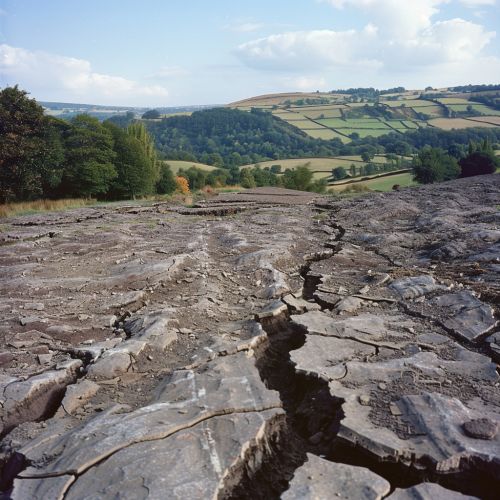Groundwater-related subsidence
Introduction
Groundwater-related subsidence is a geologic phenomenon that occurs when the level of groundwater in an area decreases, leading to a drop in the ground surface. This process can result in significant changes to the landscape, including the formation of sinkholes, fissures, and other forms of land subsidence. Groundwater-related subsidence is a significant issue in many parts of the world, particularly in regions where groundwater is heavily extracted for agricultural, industrial, or municipal uses.


Causes of Groundwater-Related Subsidence
The primary cause of groundwater-related subsidence is the extraction of groundwater from aquifers. When water is pumped out of an aquifer, the pressure in the aquifer decreases. This can lead to the compaction of the aquifer, causing the ground above to sink or subside. Other factors that can contribute to groundwater-related subsidence include natural processes such as drought and human activities such as mining and construction.
Groundwater Extraction
Groundwater extraction is the most common cause of groundwater-related subsidence. This process involves the removal of water from underground aquifers, typically through wells or other extraction methods. When water is removed from an aquifer, the pressure within the aquifer decreases. This can cause the aquifer to compact, leading to subsidence at the ground surface. Groundwater extraction is particularly common in agricultural areas, where it is used for irrigation, and in urban areas, where it is used for municipal water supplies.
Natural Processes
Natural processes such as drought can also contribute to groundwater-related subsidence. During periods of drought, the level of groundwater in an aquifer can decrease, leading to a drop in pressure. This can cause the aquifer to compact, resulting in subsidence at the ground surface. Other natural processes that can lead to groundwater-related subsidence include seismic activity and the dissolution of soluble rocks such as limestone and gypsum.
Human Activities
Human activities such as mining and construction can also contribute to groundwater-related subsidence. Mining activities can lead to the removal of large volumes of rock and soil, which can result in changes to the pressure within an aquifer. Construction activities, particularly those that involve the excavation of large amounts of soil or rock, can also lead to changes in groundwater levels and pressures, potentially resulting in subsidence.
Impacts of Groundwater-Related Subsidence
The impacts of groundwater-related subsidence can be significant and wide-ranging. These impacts can include damage to infrastructure, changes to the landscape, and impacts on water resources.
Infrastructure Damage
One of the most immediate and visible impacts of groundwater-related subsidence is damage to infrastructure. This can include damage to buildings, roads, bridges, and other structures. In severe cases, subsidence can lead to the collapse of buildings or other structures. Infrastructure damage can also include damage to underground utilities such as water and sewer lines, which can lead to further problems such as water leaks and sewage spills.
Landscape Changes
Groundwater-related subsidence can also lead to significant changes to the landscape. This can include the formation of sinkholes, fissures, and other forms of land subsidence. These changes can have significant impacts on ecosystems and wildlife, and can also pose hazards to human safety.
Water Resource Impacts
Groundwater-related subsidence can also have significant impacts on water resources. Subsidence can lead to changes in the flow of surface water and groundwater, which can impact water availability and quality. In coastal areas, subsidence can also lead to increased vulnerability to sea level rise and storm surge, potentially leading to saltwater intrusion into freshwater aquifers.
Management and Mitigation of Groundwater-Related Subsidence
Managing and mitigating the impacts of groundwater-related subsidence involves a combination of monitoring, regulation, and engineering solutions.
Monitoring
Monitoring is a critical component of managing groundwater-related subsidence. This involves tracking changes in groundwater levels and pressures, as well as monitoring for signs of subsidence at the ground surface. Monitoring can help to identify areas at risk of subsidence, and can also provide valuable data for managing groundwater resources and planning for subsidence mitigation.
Regulation
Regulation is another important tool for managing groundwater-related subsidence. This can involve regulations on groundwater extraction, particularly in areas where over-extraction is a concern. Regulations can also involve requirements for monitoring and reporting of groundwater levels and subsidence, as well as requirements for mitigation measures in areas at risk of subsidence.
Engineering Solutions
Engineering solutions can also be used to manage and mitigate the impacts of groundwater-related subsidence. This can include the use of alternative water sources to reduce reliance on groundwater, as well as the use of engineered structures to prevent or mitigate subsidence. In some cases, it may also be possible to reverse subsidence through the injection of water or other fluids into an aquifer, although this approach can have its own risks and challenges.
